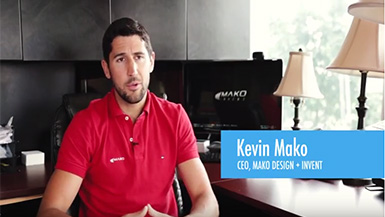Green Engineering: Embracing Sustainability in Conceptualization and Design
In today’s rapidly evolving world, the importance of environmental sustainability in concept and design cannot be overstated. We will explore how green engineering, a discipline focused on creating products, processes, and systems. Can reduce environmental impact while enhancing efficiency and resource conservation.
What is Green Engineering?
In a world where environmental sustainability is becoming increasingly imperative, green engineering emerges as a vital discipline. Green engineering, also known as sustainable engineering, aims to design products, processes, and systems that minimize environmental impact while maximizing efficiency and resource conservation. It encompasses a holistic approach, integrating environmental science, engineering, and design principles to create innovative solutions for a greener future.
Drawing Creation and its Role in Ensuring Accurate Manufacturing
Drawing creation is key in the journey from concepts to manufacturing in green engineering. It bridges design intent and practical implementation, ensuring that sustainability goals are effectively translated into tangible products. Here’s how drawing creation contributes to the realization of green engineering principles:
- Precision in Design: Detailed drawings communicate a product or component’s precise specifications and dimensions. Engineers can optimize material usage and minimize waste during manufacturing processes by accurately depicting design features and tolerances. This attention to detail aligns with the fundamental goal of green engineering – resource efficiency, which refers to the use of resources in a way that minimizes waste and maximizes output. In the context of drawing creation, resource efficiency means using the right number of materials and energy to create a product, thereby reducing waste and environmental impact.
- Material Selection: Green engineering emphasizes using eco-friendly materials with minimal environmental impact throughout their lifecycle. Drawings provide essential information for material selection, enabling engineers to choose sustainable alternatives without compromising product performance. By specifying renewable, recyclable, or biodegradable materials, drawings facilitate the integration of sustainability into the design process.
- Energy Efficiency: Efficient energy use is a cornerstone of green engineering. Drawings enable engineers to design products with optimized energy consumption by minimizing unnecessary features, streamlining production processes, and incorporating energy-saving technologies. By accurately depicting energy flow and component interactions, drawings guide manufacturers in implementing energy-efficient solutions that reduce environmental footprint.
- Life Cycle Analysis: Green engineering considers a product’s entire lifecycle, from raw material extraction to disposal or recycling. Drawings provide valuable insights into product complexity, assembly requirements, and end-of-life considerations, facilitating lifecycle analysis and environmental impact assessment. By visualizing the product life cycle, engineers can identify opportunities for optimization and design products with extended durability and recyclability.
- Collaboration and Communication: Effective communication is essential for interdisciplinary cooperation in green engineering projects. Drawings are a common language, facilitating communication between engineers, designers, manufacturers. Clear and comprehensive drawings ensure that everyone involved in the product development process understands the sustainability objectives and works towards their realization.
Conclusion
Green engineering is not just a technical process; it represents a commitment to a more sustainable future. By leveraging detailed visual representations of design intent, engineers can truly optimize resource utilization, select eco-friendly materials, enhance energy efficiency, and conduct comprehensive lifecycle analyses. Embracing sustainable design principles from the conceptual stage can drive engineers to innovate solutions that minimize environmental impact while building a culture of sustainability.
At TriMech, our Project Engineering Group is dedicated to supporting your journey towards sustainable engineering solutions. Our team of experts can assist with every aspect of your green engineering projects, from initial concept drawings to final manufacturing. By integrating our services, you can drive positive change, reduce your ecological footprint, and meet the growing demand for sustainable products and solutions
Want to hire TriMech Design? The team offers a wide range of capabilities to cater for your design and engineering requirements. Contact us now.
Have a Product Idea?
Discover our product development services tailored to startups, small manufacturers, and inventors.
Design Newsletter
Get the latest news curated for designers, makers and inventors.
More from our Blog
The SUBPAC Vest is Headphones for your Body
New wearable technology allows you to feel sound. Subpac vest is made for immersive sound and bass is the IoT's hottest technology. Fans are going...
MAKO Invent & Ryerson University’s Student Invention Award
MAKO Invent, Ryerson University, and RBC Royal Bank have teamed up for the first annual Student Invention Awards at Ryerson’s Digital Media Zone, Toronto, Ontario,…
Kevin Mako Keynotes Queen’s Entrepreneurs’ Competition 2021
One of the core values we prioritize at TriMech Design Solutions, as a leading Toronto product development firm, is boosting, supporting, and developing as many…
Need help with your Product Idea?
Tell us about your invention or product design idea and get the help you need design, build and bring it to market
















